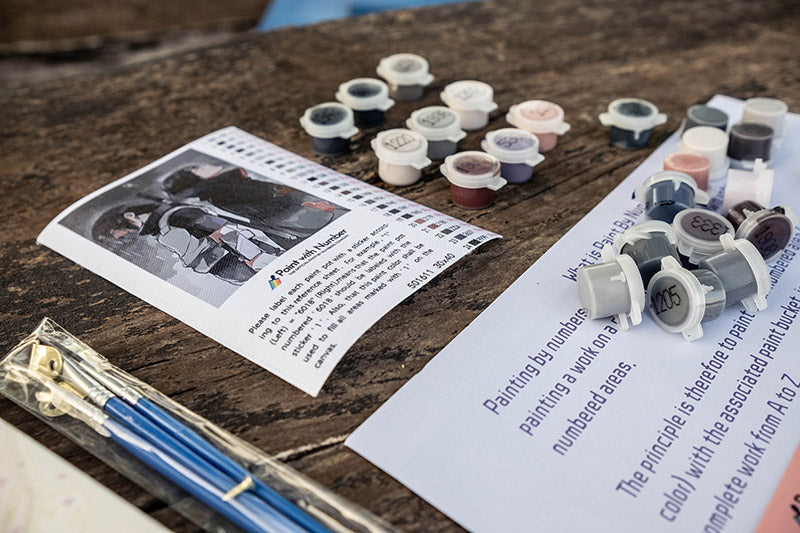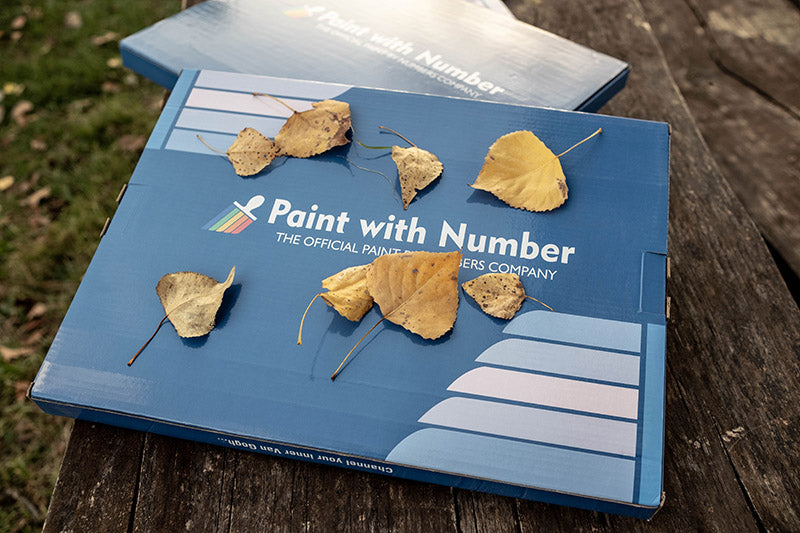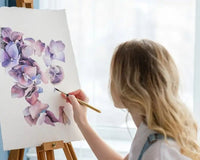Painting by numbers has become a popular pastime for artists of all skill levels, offering a structured and enjoyable way to create beautiful artworks.
However, one common frustration that many painters encounter is the discrepancy between the colors in the paint pots and the final result on the canvas.
In this blog post, we'll explore the reasons behind this phenomenon and provide insights into how to overcome it.

Understanding Color Variation
The phenomenon of colors appearing differently in the paint pot than on the painting can be attributed to several factors. One of the primary reasons is the difference in the medium's opacity and transparency.
Some colors may appear more vibrant or intense in the paint pot due to their concentration, but when applied thinly on the canvas, they may appear lighter or more subdued.
Effects of Underlying Base Colors
Another factor that contributes to color variation is the underlying base colors on the canvas. The base color, whether it's white, black, or another hue, can alter the perceived color of the paint when applied on top. For example, applying yellow paint on a black base may result in a different shade than applying it on a white base.
Impact of Lighting Conditions
Lighting conditions also play a significant role in how colors are perceived. Natural daylight, artificial lighting, and even the angle at which the painting is viewed can affect how colors appear. As a result, the same color may look different under different lighting conditions, leading to discrepancies between the paint pot and the painting.

Tips to Address Color Discrepancies
While color variation is a common occurrence in paint by numbers projects, there are several strategies you can employ to minimize its impact:
Test Colors on a Scrap Canvas: Before applying paint to your main canvas, test the colors on a scrap canvas to see how they appear in different lighting conditions and over various base colors.
Use Thin Layers of Paint: Apply thin layers of paint to build up color gradually and prevent the paint from appearing too intense or opaque.
Mix Colors to Achieve Desired Shades: Experiment with mixing different colors to achieve the exact shade you desire, rather than relying solely on the colors provided in the paint pots.
Adjust Lighting Conditions: Paint under consistent lighting conditions to ensure color consistency and accuracy throughout the painting process.
Conclusion
While it can be frustrating to encounter color variations in paint by numbers projects, understanding the factors that contribute to this phenomenon can help you address them effectively.
By experimenting with different techniques and being mindful of lighting conditions, you can ensure that the colors in your paint by numbers painting closely match your vision and expectations.
Remember that painting is as much about the process as it is about the final result, so embrace the journey and enjoy the creative experience!























